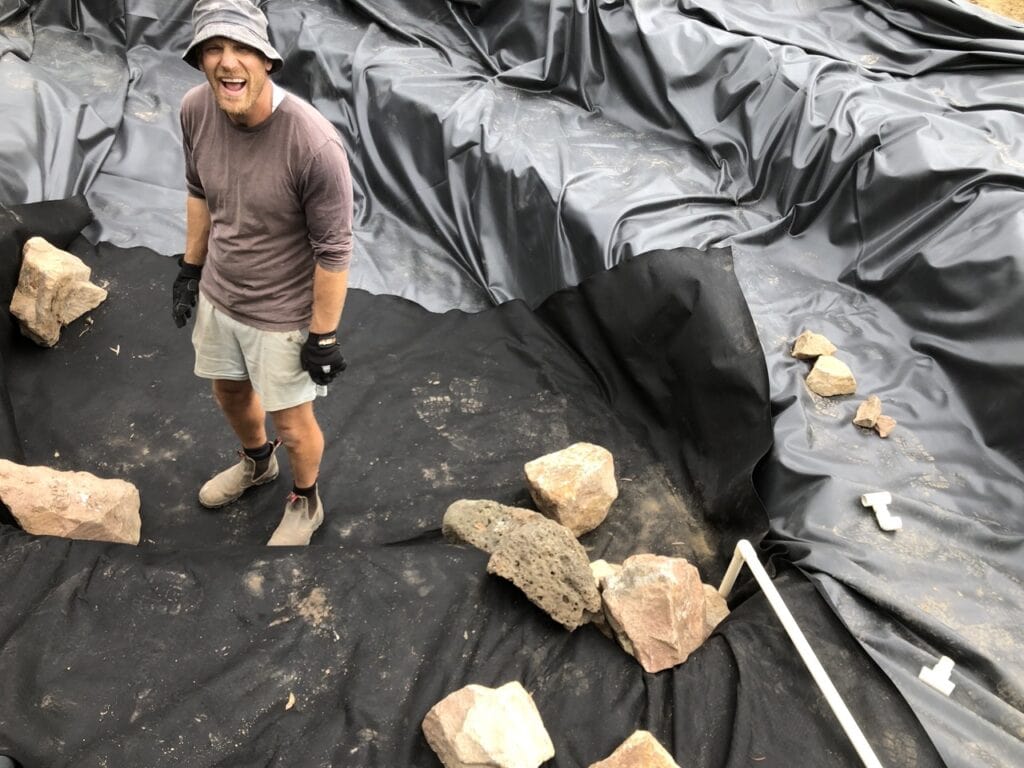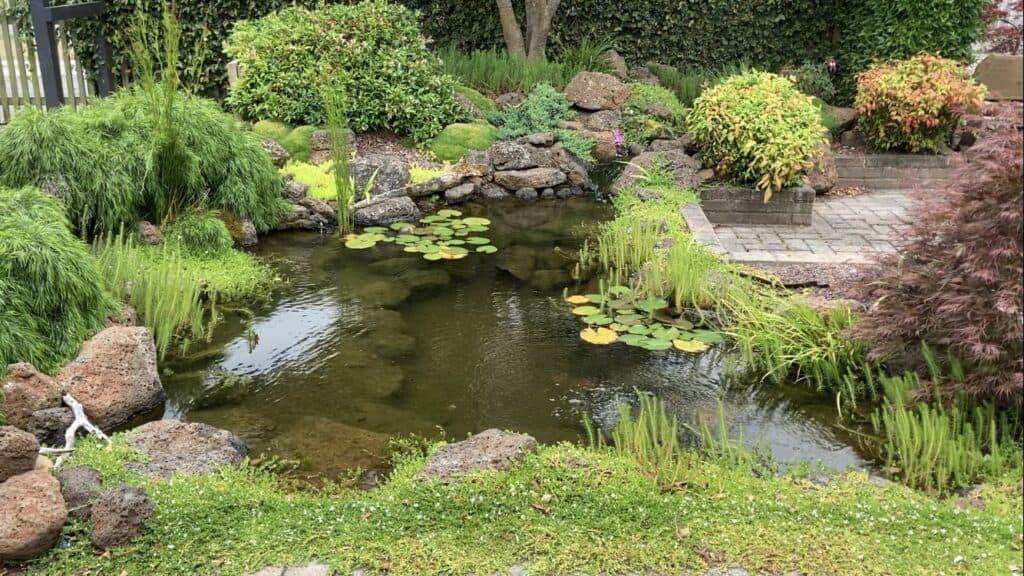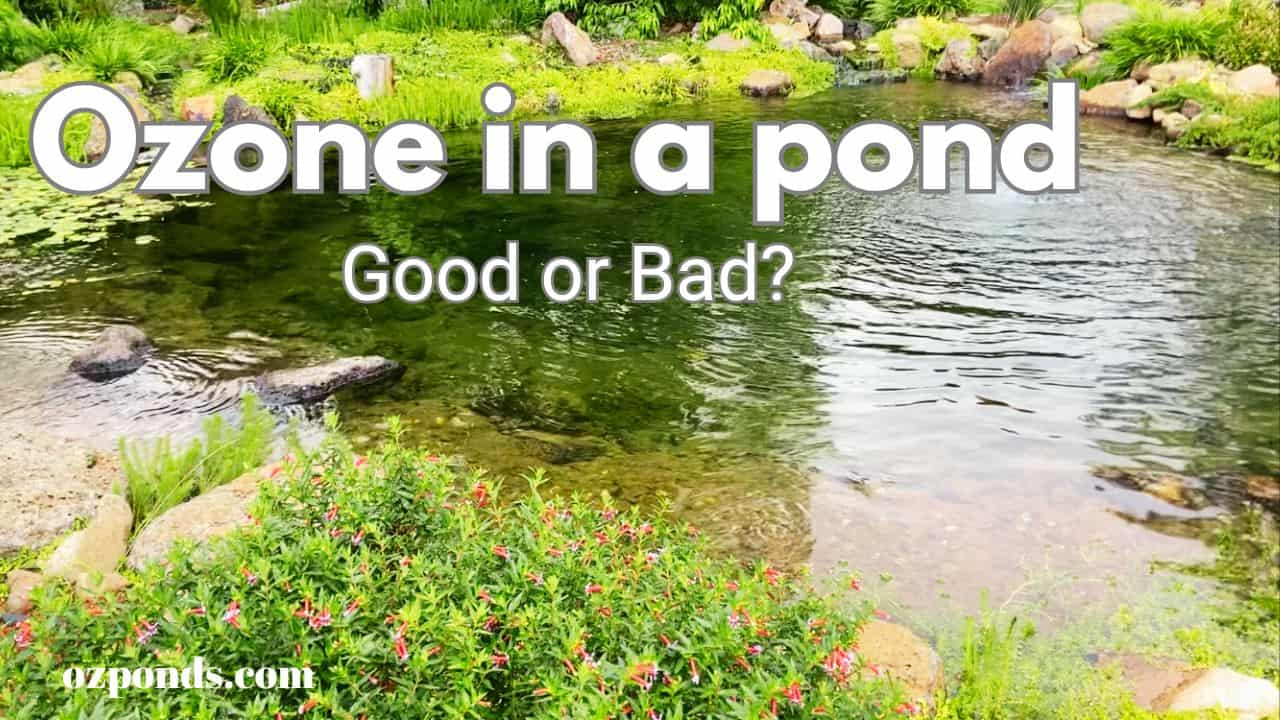In my journey to create and maintain beautiful, functional ponds, I’ve embraced a low-tech, ecosystem-based approach. However, the allure of pristine, sand-bottom ponds you see on social media has sparked my curiosity.
Could these high-tech setups hold lessons for us, or do they simply add complexity without significant gains? Let’s dive into what I’ve been exploring.
If you prefer I made a video on this topic:
Natural Ecosystems vs. High-Tech Systems
I’ve always favored the ecosystem approach—allowing nature to do the heavy lifting. Algae, biofilm, and bacteria all contribute to a thriving pond.
My trusty bog filter and intake skimmer keep things simple and functional, and any excess debris is easily managed with a pond skimming net.
However, the sand-bottom ponds popularised on platforms like Instagram present a different aesthetic and functionality.
These setups rely heavily on advanced mechanical and oxidising filtration, including technologies like ozone generators and UV sterilisers.
While intriguing, they raise some questions about long-term practicality, maintenance, and sustainability.
The Role of Oxidisers in Pond Maintenance
Oxidisers, such as ozone or hydrogen peroxide, are powerful tools for breaking down organic matter like fish waste, decaying plants, and uneaten food.
Ozone, in particular, acts as an indiscriminate oxidiser, targeting both beneficial and harmful bacteria. This can be useful for cleaning up sludge and algae, but it comes with risks.
- Benefits of Ozone in Ponds:
- Reduces organic waste buildup.
- Can improve water clarity when used properly.
- Works well in conjunction with mechanical filtration to capture fine debris.
- Challenges of Ozone:
- Complexity: Requires monitoring of oxidation-reduction potential (ORP) to avoid sterilizing the pond entirely.
- Maintenance: Needs careful regulation to prevent harm to the pond ecosystem.
- Dependency Risks: Over-reliance on ozone can weaken natural biological filtration, leaving the pond vulnerable if the system fails.
Below is a video showing what happened when I added 3% hydrogen peroxide to my pond. If you prefer you can read this article.
Mechanical Filtration: Balancing Effectiveness and Simplicity
High-tech ponds often integrate mechanical filtration systems. These filters can physically remove fine organic particles from the water.
Here’s a few options:
1. Sieve Filters
- How They Work: Water passes through a fine, sloped mesh screen that captures debris while allowing water to flow through.
- Key Feature: Great for removing larger particles (e.g., leaves, fish waste) before they reach the biological filter.
- Maintenance: Needs regular cleaning to avoid clogs.
2. Solid-Settling Filters
- How They Work: Water slows down in a chamber, allowing heavier solids to sink to the bottom.
- Key Feature: No moving parts, making it simple and reliable.
- Maintenance: Periodic sludge removal is necessary.
3. Drum Filters
- How They Work: Water flows through a rotating drum with fine mesh; debris is trapped, and a spray system cleans the drum automatically.
- Key Feature: High-tech, automated, and effective for fine debris.
- Maintenance: Minimal due to self-cleaning but requires power and occasional servicing.
4. Skimmers
- How They Work: Float on the surface or sit on the pond’s edge to capture floating debris (leaves, pollen) before it sinks.
- Key Feature: Protects pumps and prevents organic waste buildup.
- Maintenance: Regular basket emptying is needed.
5. Bead Filters
- How They Work: Water flows through a pressurized tank filled with plastic beads that trap solids and provide surface area for bacteria.
- Key Feature: Dual function—mechanical and biological filtration.
- Maintenance: Requires periodic backwashing to clear debris.
6. Vortex Filters
- How They Work: Water enters a circular chamber, spinning to create a vortex that separates solids by gravity.
- Key Feature: Removes larger debris and prevents clogging downstream filters.
- Maintenance: Simple, with occasional sludge removal.
7. Brush Filters
- How They Work: Brushes placed in a filter chamber trap debris as water flows past them.
- Key Feature: Economical and easy to DIY.
- Maintenance: Brushes must be manually cleaned frequently.
8. Matting Filters (Matala/Filter Pads)
- How They Work: Water passes through layered coarse and fine mats that capture solids.
- Key Feature: Also offers biological filtration.
- Maintenance: Mats need regular rinsing to avoid clogs.
Each filter type caters to specific needs and maintenance preferences, so combining a few of these can optimise your pond’s filtration system.
While these tools are undoubtedly effective, they come with added maintenance and operational demands.
For instance, clogged filters can lead to decreased efficiency and even cause leaks if not cleaned regularly.

Looking for affordable pond products?
I’ve assembled a list and helpful links to the products I use when building my ponds.
If you want to check it out click the button below.
Lessons from a Sand-Bottom Pond
One example I came across involved a stunning sand-bottom pond in Las Vegas. Despite its beauty, the pond became problematic when the owner’s daughter developed a bacterial infection. The system, heavily reliant on ozone, faltered when shut off, leading to rapid water degradation.
This scenario highlights a potential flaw in overly complex systems: their reliance on artificial interventions can undermine the natural resilience of a pond ecosystem.
Here’s the video I’m referring to:
Why I Prefer Low-Tech Solutions
For me, simplicity wins. My ponds thrive with minimal intervention, relying on natural biological processes and low-maintenance tools like a bog filter and skimmer.
Here’s why I’m sticking to this approach:
- Resilience: A balanced ecosystem adapts naturally to changes, even if circulation stops.
- Low Maintenance: My system requires little upkeep, freeing me from the constant cleaning and monitoring high-tech solutions demand.
- Cost-Effectiveness: No expensive equipment or electricity bills for running ozone or UV systems.

Blueprint I use to build my ponds
- All the numbers I use to design my ponds, delivered straight to your inbox
- These formulas have helped people all over the world build beautiful, low maintenance ponds, without spending a fortune.
- Access to a private community of like minded people and a chat bot that loves answering pond related questions.
Experimentation and the Future
That said, I’m not averse to trying new things. I’ve ordered Venturi systems and plan to test their efficiency in oxygenating water and potentially integrating protein skimmers.
I may even give ozone a trial run in one of my ponds—but I’m skeptical about its long-term viability in my setup.
Final Thoughts
While sand-bottom ponds and high-tech filtration systems are impressive, they don’t align with my philosophy of simplicity and sustainability. My ponds may not win beauty contests, but they’re easy to maintain, cost-effective, and work harmoniously with nature.
For those considering high-tech setups, remember to weigh the benefits against the added complexity and maintenance. Sometimes, sticking to the basics yields the best results—for both you and your pond.
I hope this article was helpful. Thanks for reading!

Join my free email list
If you would like to join my free email list click the button below.
I promise I won’t spam you, I’ll only send information I think can help you save money building and maintaining a pond.

